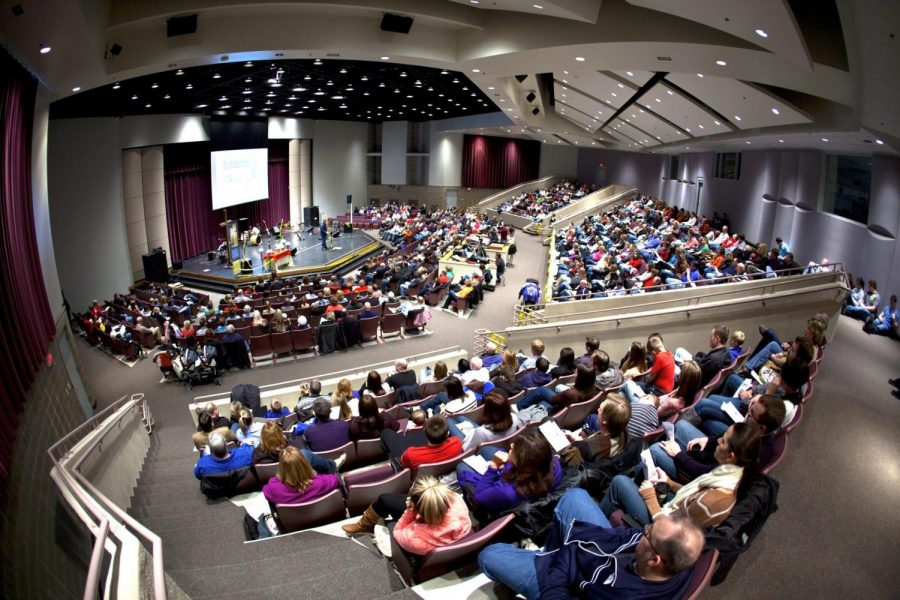Religious Freedom
Why Churches can go to school
Photo courtesy of Water’s Edge Church
Water’s Edge using Millard West auditorium for church service
March 14, 2018
The separation of Church and State is an important part of America’s past. History lessons in school teach students that pilgrims came to America for religious freedom among other things. Flash forward centuries into the future and people in schools have the same thought process. No persecution or restrictions for religious beliefs.
The Freedom of Religion clause in the First Amendment of the United States Constitution includes two separate, distinct provisions. First, the Establishment Clause, which prohibits the government from endorsing any particular religion over another, and from favoring religious beliefs over agnostic or atheist beliefs. Second, the Free Exercise Clause generally protects a person’s right to practice the religion of his or her choice, free from government regulation or interference.
So, with the law being clear, we look to public schools.
The excuse for allowing state sponsored prayer was to combat juvenile delinquency and curb communism in the cold war era. This was decided in 1955. Then, in 1963, an atheist mother by the name of Madalyn O’Hair, took her son out of school because his class prayed before the start of lessons. She, along with other parents, took to the supreme court to banish required prayer in public school.
In the present day, no forced prayer is found, no mandatory reading from the Bible, and no sit-in-church services. However, all mentioned above happens on the weekend.
Sundays are known to be the time when types of religions go to church. There are also churches who go to schools on religious days. With all the fuss about no church or God in school back in the day, why aren’t there angry atheists who are protesting the use of schools for churches right now?
It all comes down to the legality of faculty use.
“The government can’t deny a request to use school facilities by a church group simply because it is a religious-based request,” Millard Public Director of Activities Nolan Beyer said.
If there was a denial, churches could take this as far as the supreme court, just like the parents did. Even if they wanted to, a district official couldn’t deny the churches the use because it’s a tight clause with little loop holes.
“Such a blanket denial could be considered a violation of the Free Exercise Clause,” Beyer said. “The denial could be viewed as accommodating to non-secular, which would violate an individual’s right to exercise their religious faith. Favoring a particular religion or religion in general is not permitted by the Establishment Clause.”
While prayer isn’t allowed to be forced in schools, churches are allowed to use school buildings from anywhere between $400 to $814 a day. The church gets the space it needs, and the district gets a little extra pocket change. It’s a win-win. When one church gets too big for the school building, they move out, and the next church comes in. It’s a revolving door of extra money for the district, which means better education for everyone.







